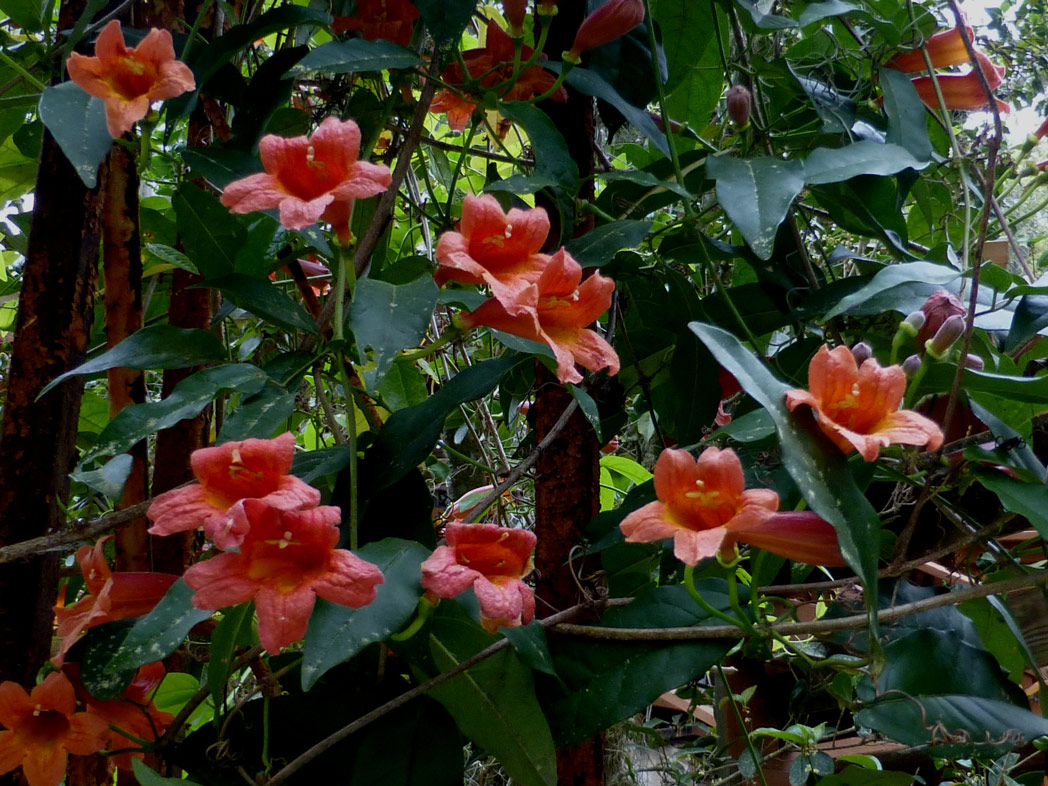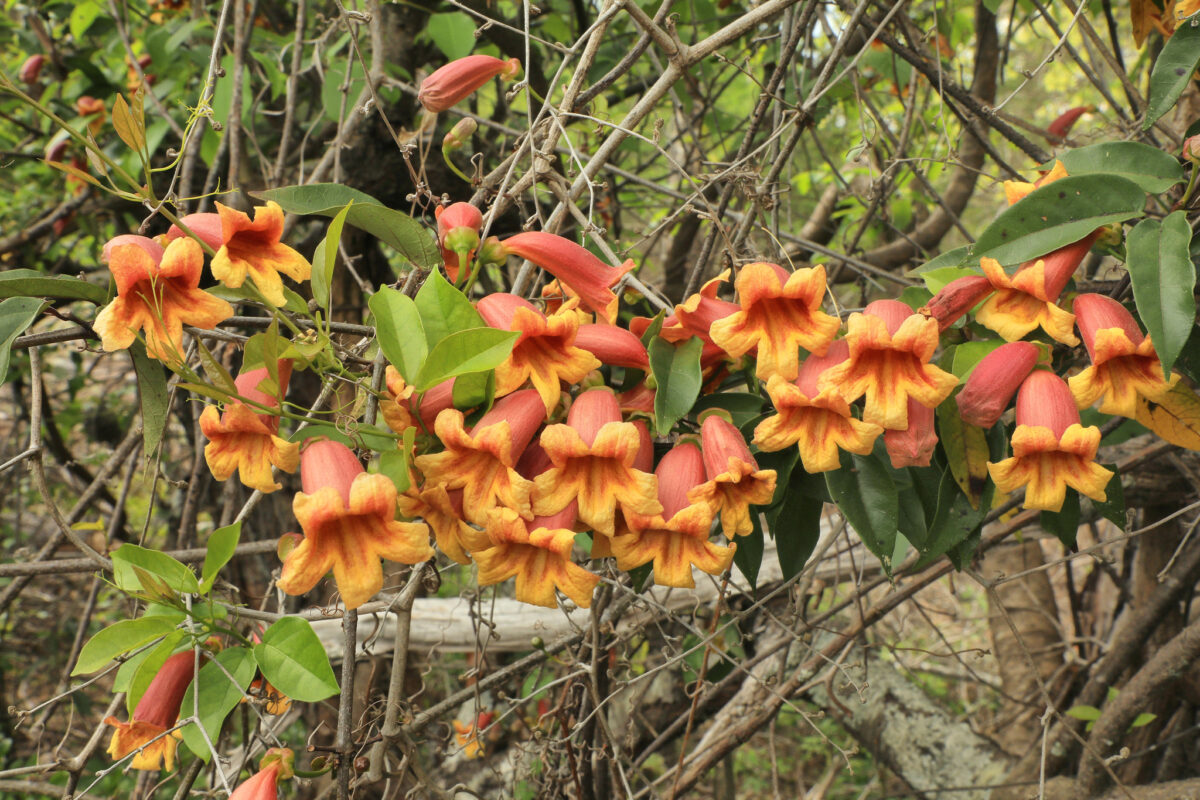Crossvine
Pictured above: Crossvine (Bignonia capreolata) by Eleanor Dietrich. Click on terms for botanical definitions. View post as a PDF.
Crossvine (Bignonia capreolata) is a perennial evergreen vine, so named because a cross-section of its stem reveals a cross-shaped pattern. It typically blooms in spring, when it puts on a spectacular display, but flowers can appear as early as February and as late as June. It occurs naturally in mesic to dry hammocks, floodplain forests and dry hardwood forests. It is mainly pollinated by hummingbirds but also attracts some butterflies.
The flowers are long (2–3”), tubular and reddish-orange with yellowish throats. They are borne in showy clusters that emerge from the leaf axil. Both corollas and calyces are five-lobed. Its compound leaves are dark green, petiloate and oppositely arranged. Each leaf bears two lanceolate leaflets and a tendril. The stem is robust, growing to about 1” in diameter. The fruit is a long brown bean-like capsule that splits when dry to expose its winged seeds.
Family: Bignoniaceae (Bignonia family)
Native range: Panhandle, north and central peninsula
To see where natural populations of Crossvine have been vouchered, visit florida.plantatlas.usf.edu.
Lifespan: Perennial
Soil: Moist, well-drained organic soils
Exposure: Full sun to full shade (Full sun will yield more flowers)
Growth habit: Can climb to over 50 feet
Propagation: Seeds, cuttings
Florida regions of landscape suitability: North, Central
Garden tips: Because of its fast growth rate and potential size, may be difficult to control in small setting. It is best used in a naturalistic landscape or trained on a fence, wall or large trellis.
Crossvine is available from nurseries that specialize in Florida native plants. Visit www.plantrealflorida.org to find a nursery in your area.
Learn more about Crossvine from the Florida Native Plant Society and the Institute for Regional Conservation.


